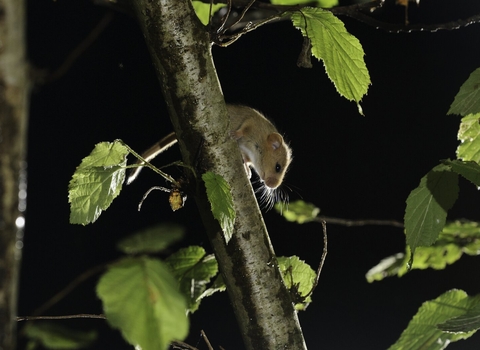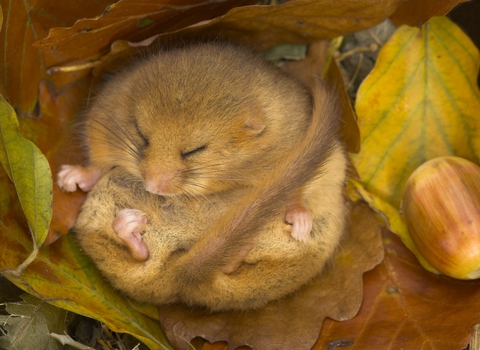
Young hazel dormouse by Terry Whittaker/2020VISION

©Danny Green
Hazel dormouse
Hazel dormice are hard to spot – not only do they only come out at night, but they are also only found in very few places in the UK. Dormice spend a lot of their time hibernating – and are known to snore!
Scientific name
Muscardinus avellanariusWhen to see
April to OctoberSpecies information
Category
Statistics
Length: 6-9cmTail: 5.7-6.8cm
Weight: 15-40g
Average lifespan: 5 years
Protected in the UK under the Wildlife and Countryside Act, 1981. Priority Species under the UK Post-2010 Biodiversity Framework. Listed as a European Protected Species under Annex IV of the European Habitats Directive.
